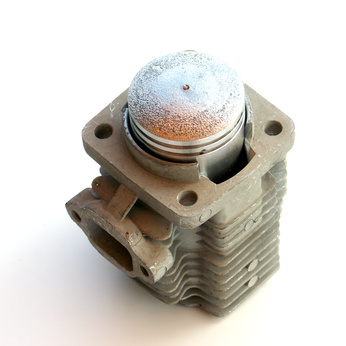
The clearance volume refers to the distance from the top of the piston flat to the block deck of the engine cylinder. In many engines the piston will not come all the way to the cylinder block, but there is a gap and this gap is the clearance volume. The clearance volume is important to the compression ratio. The compression ratio is the amount of volume that can be compressed in the engine per one unit of space.
Set the dial of a bridge and dial indicator to zero. A bridge and dial indicator is a type of bridging pit gauge that measure buckles, dents and length of gaps. Place the bridge and dial indicator at the top, dead center of the piston. Read and record the measurement of the piston deck height, which is the gap found just above the piston. The unit of this measurement is inches.
Measure the bore with a bore gauge. A bore gauge is a tool that measures the size of holes, in this case the bore or top hole in the cylinder. Multiply the bore measurement by two.
Calculate clearance volume. Multiple the bore measurement squared by the deck height and the result by the constant 0.7853982. For example, if the bore measurement is 8 inches and the deck height is 0.02 inches, then the clearance volume equals 1.0053 cubic inches: 0.7853982 (8^2) 0.02.